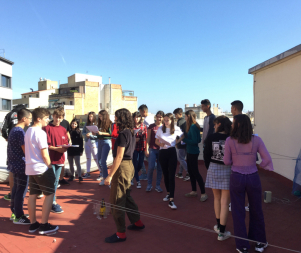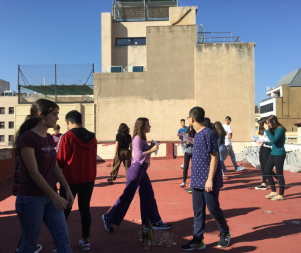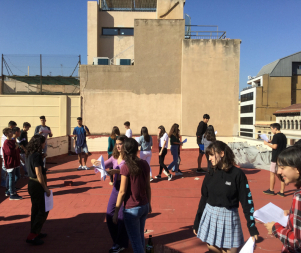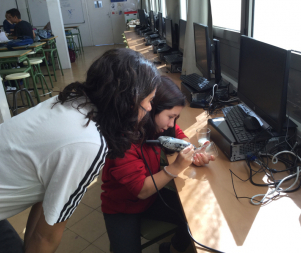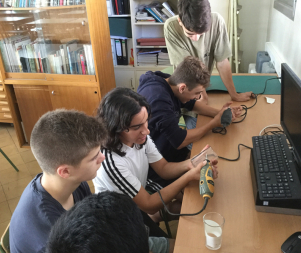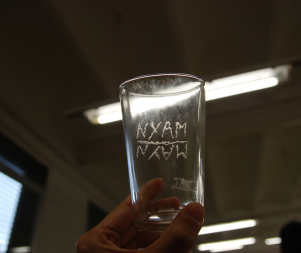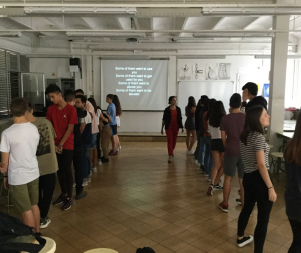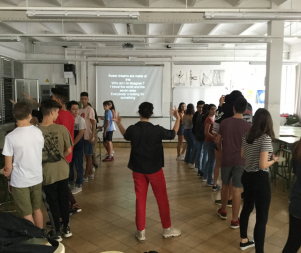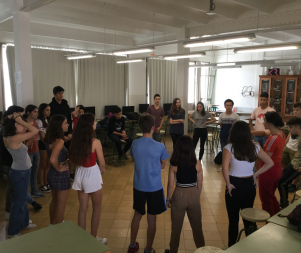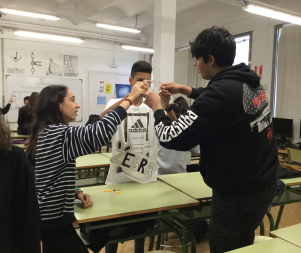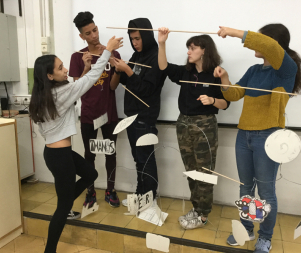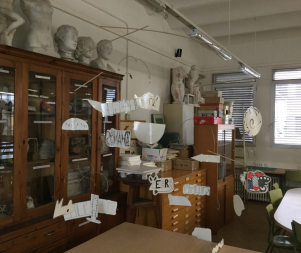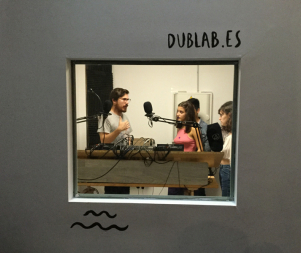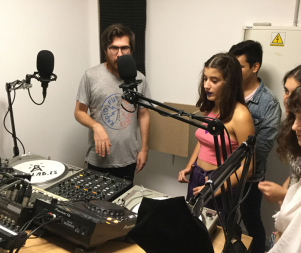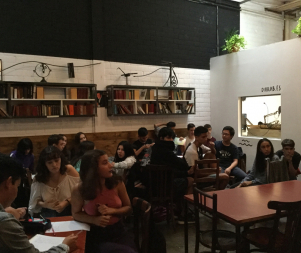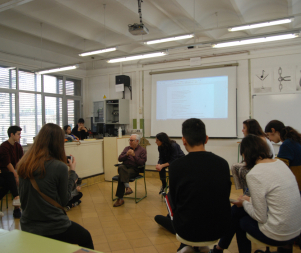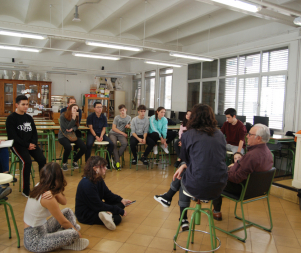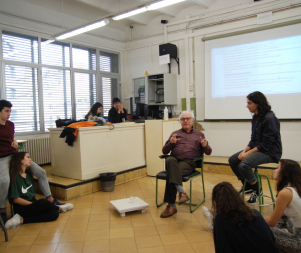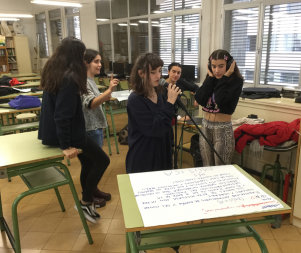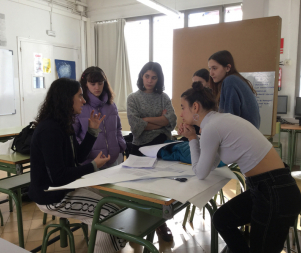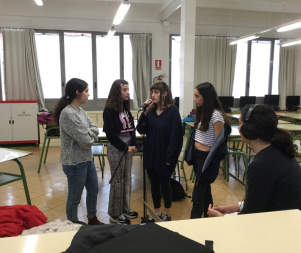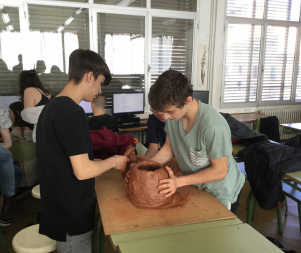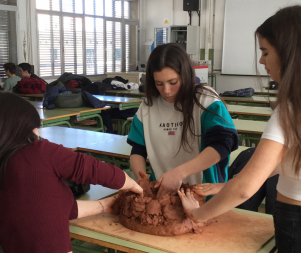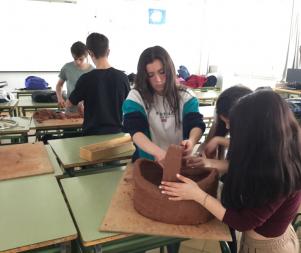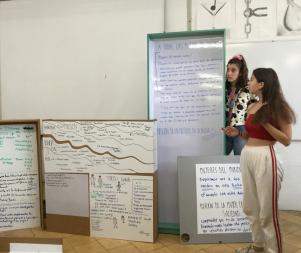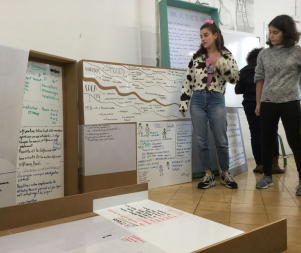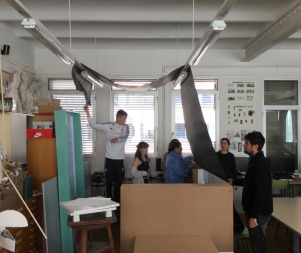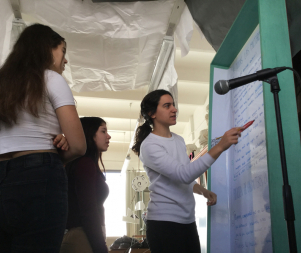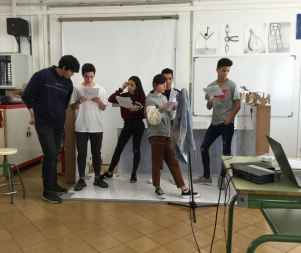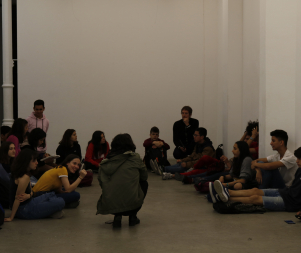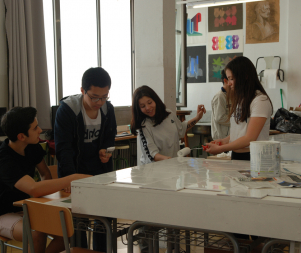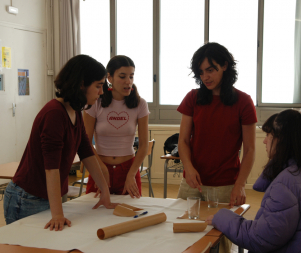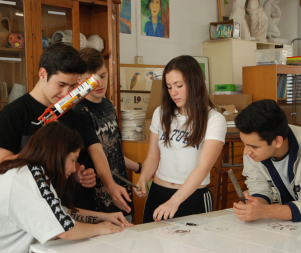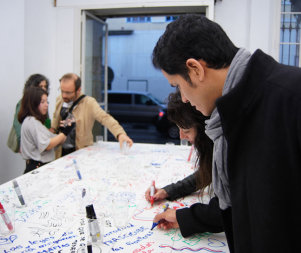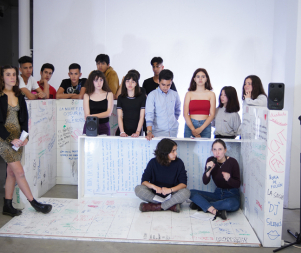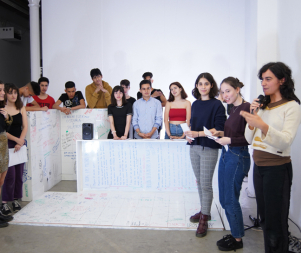- 14th EDITION 2022 / 2023
- 13th EDITION 2021 / 2022
- 12th EDITION 2020 / 2021
- 11th EDITION 2019 / 2020
- 10th EDITION 2018 / 2019
- 9th EDITION 2017 / 2018
- 8th EDITION 2016 / 2017
- 7th EDITION 2015 / 2016
- 6th EDITION 2014 / 2015
- 5th EDITION 2013 / 2014
- 4th EDITION 2012 / 2013
- 3rd EDITION 2011 / 2012
- 2nd EDITION 2010 / 2011
- 1st EDITION 2009 / 2010
Claudia Pagès IN RESiDENCE at the School Jaume Balmes
Text: handling, cutting, saying...
The residence's starting and exploration point is the text and its move from writing, oral transmission or right at the intersection of the various spaces. To begin the discovery, a reading of a text by Bathkin’s text was proposed. Following a linear reading, a proposal was made for it to be broken up so that new things could be said and new meanings expressed. The students worked on this line of experimentation throughout the first term.
The words, the conversation, the glasses
Can there be a word that only exists in writing? Or one that only exists in oral expression? New invented words came about from this question, which were then engraved on glasses. The glasses became an articulating element of the conversations and would therefore play a central role throughout the process.
The voice on the roof terrace and Sweet Dreams
Using the voice by reading texts, excerpts of texts, singing and reciting pieces such as Sweet Dreams were some of the proposals worked on as warm-up exercises.
From text to sketch
The written words and conceptual maps led the group to create a mobile that was conceived of as a “machine for relating concepts”. This allowed us to talk about typography.
Dublab: discovering an independent radio station
Visit to and discovery of Ràdio Dublab in the Raval district: its running, programmes, technical equipment, spaces and organisation... are just some of the issues that arose during our conversations with the people in charge of the radio station.
Interview with the historian Ferran Aisa
Radio became a central feature of the research. That was why, and to find out some of its history, we invited Ferran Aisa, the historian of pre-Civil War radio in Barcelona who is closely connected to the CNT-FAI movement. Thanks to him we discovered programmes, texts, recordings as well as uses, curious facts and so on.
The radio programmes
How could we make radio programmes based on the ones made at the CNT-FAI but which also related to the issues of today? Work teams were set up to draft the initial radio-programme-style texts and recordings.
Space, fullness, void: from sculpture to stage design
While this work was going on, an opportunity arose for creating a structure that enabled small stage designs, recording studios, surfaces for writing excerpts of the texts that are read out...
Building the modules, changing classroom spaces
We began to search for disused materials in the school to enable the creation of these classroom structures and compartmentalisations. So, some wooden modules and panels were found which provided the basis for the stage-design work carried out.
A recording studio: the podcasts
Work now began on diction, recording, editing and assembling to make podcasts of the various radio programmes. Rehearsal work together with script work.
Visit to the Galeria Àngels
Once the venue for the final presentation had been determined, a visit was organised for finding out about the place and starting to thinking up the arrangement and choose the elements to be included in the final piece.
Assembling: choosing and producing the exhibition elements
Defining and producing exhibition elements. At the same time, the idea came about for including excerpts of texts, gleaned from the Raval district, in the exhibition room. A small search was organised through the neighbourhood, for recording these texts... The excerpts were therefore based on conversations that could be heard, on texts found written on walls, in posters or in documents... and ended up being included on the central table, with the suggestion that they should be incorporated once more on the day of the presentation.
Presentation
The presentation was given on 28 May: in addition to the display of the stage designs and the texts written on the table, the textual part was made explicit through textual dossiers, and from the final performative part, where students read out parts of the scripts produced.

